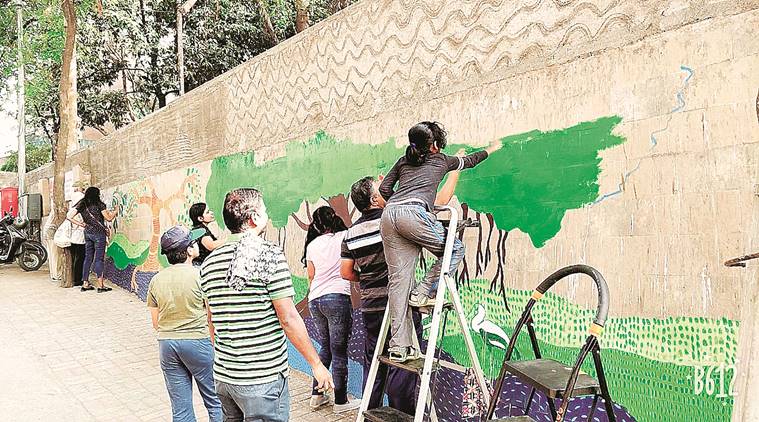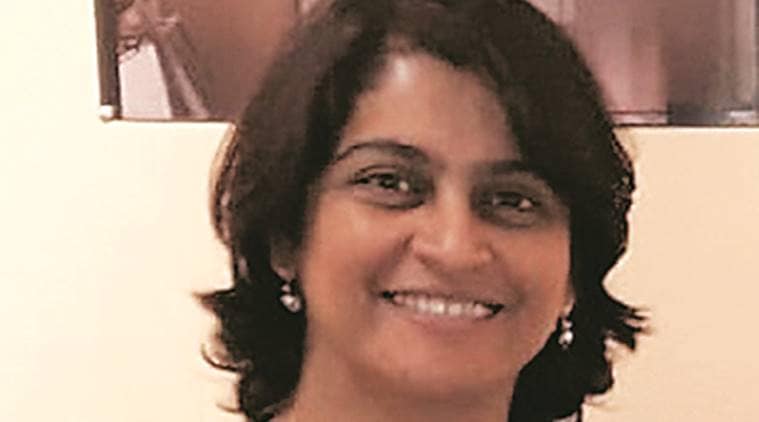
Abha Bhagwat, a Pune-based painter, was in Anandwan, Baba Amte’s Leprosy rehabilitation centre in Chandrapur district, a few years ago. She came across leprosy patients who suffered from the stigma of having disfigured hands. Known for using the city’s walls as her canvas, Bhagwat worked with Sheetal, Amte’s granddaughter, to create something with the patients. She got them to make impressions of their hands on the wall and then turned them into blooming, colourful flowers in a giant naturescape that became a mural.
This, she says, is what all her wall paintings are aimed at — to turn what’s considered ugly into something beautiful.
Bhagwat, 43, who teaches art at Aksharnandan School in Pune, graduated from Abhinav Mahavidyalaya. In 2004, she did masters in painting from Academy of Arts University, San Francisco.
She discovered the joy of painting on large surfaces in 2013 when she painted an old cupboard at Garware Balbhavan School, where her mother is a director. “It was done out of compulsion,” she says, as the old piece of furniture looked ugly. “I painted that old cupboard and it threw up amazing results. The children who worked with me on the project were very happy. This led to kids getting involved in my projects.
Following this, at Aksharnandan School, I painted a few walls with the students. That led to people giving me more projects,” says Bhagwat. Since then she had painted over 120 walls in Pune, and in various places in Maharashtra, Karnataka and Rajasthan.
During these initial works, another discovery for her was how children of various age groups look at and respond to art. She observed what it meant for the young minds to pick up a brush and paint.

“By this time, I had my own children. I began to observe how they made art, how art takes birth in a child and how it grows. I was keenly watching every stage and it was fascinating. I started experimenting by giving them, my own kids as well as those who would participate in my wall painting exercises, various mediums, materials and forms,” she says.
In 2015, she was invited by Pune Biennale to paint a huge wall in Koregaon Park as part of the build-up for the event. She completed the project with the help of 60 students but wasn’t happy with the results. “It was during this project, I realised that the group has to be smaller so that I could interact with them more closely,” says Bhagwat.
This was followed by an assignment from Tata Trust to paint the walls of the libraries that they were opening in rural areas of Rajasthan and Karnataka. “During this project, I realised that if we involve local people in beautifying it, they develop a bond with the place. In fact, it so happened that several kids, who were not regular at schools, started coming here everyday after we did the exercise. At another place, where I drew a local young girl on a wall who couldn’t attend the school because she had to look after her younger brother, the village elders would visit the wall and discuss the girl’s predicament and possible solutions,” says Bhagwat. These episodes led her to make it a rule that wherever she would work among communities, she would involve the locals. “Someone coming from outside and putting art in their spaces like plaster is not so effective. If they are involved, they make the art a piece of their heart,” she says.
These days, she can be seen painting with a small group of young women — Rangaja — along the Mula Mutha riverbeds, in Pune. The river, which is integral to the city, is often compared to a dirty nullah. With Bhagwat and Rangaja team’s weekly interventions, it’s slowly turning into a colourful urban space.
“There may be great art inside galleries and elite homes. But there are very few places in the city for common people to appreciate art and find aesthetic satisfaction. At the moment, we are focusing on rivers.
They have become quite dirty. When we stand in the dirt to paint a wall, a bridge or a pillar, we realise how filthy they are. We are also using these paintings to draw attention to this issue,” says Bhagwat.